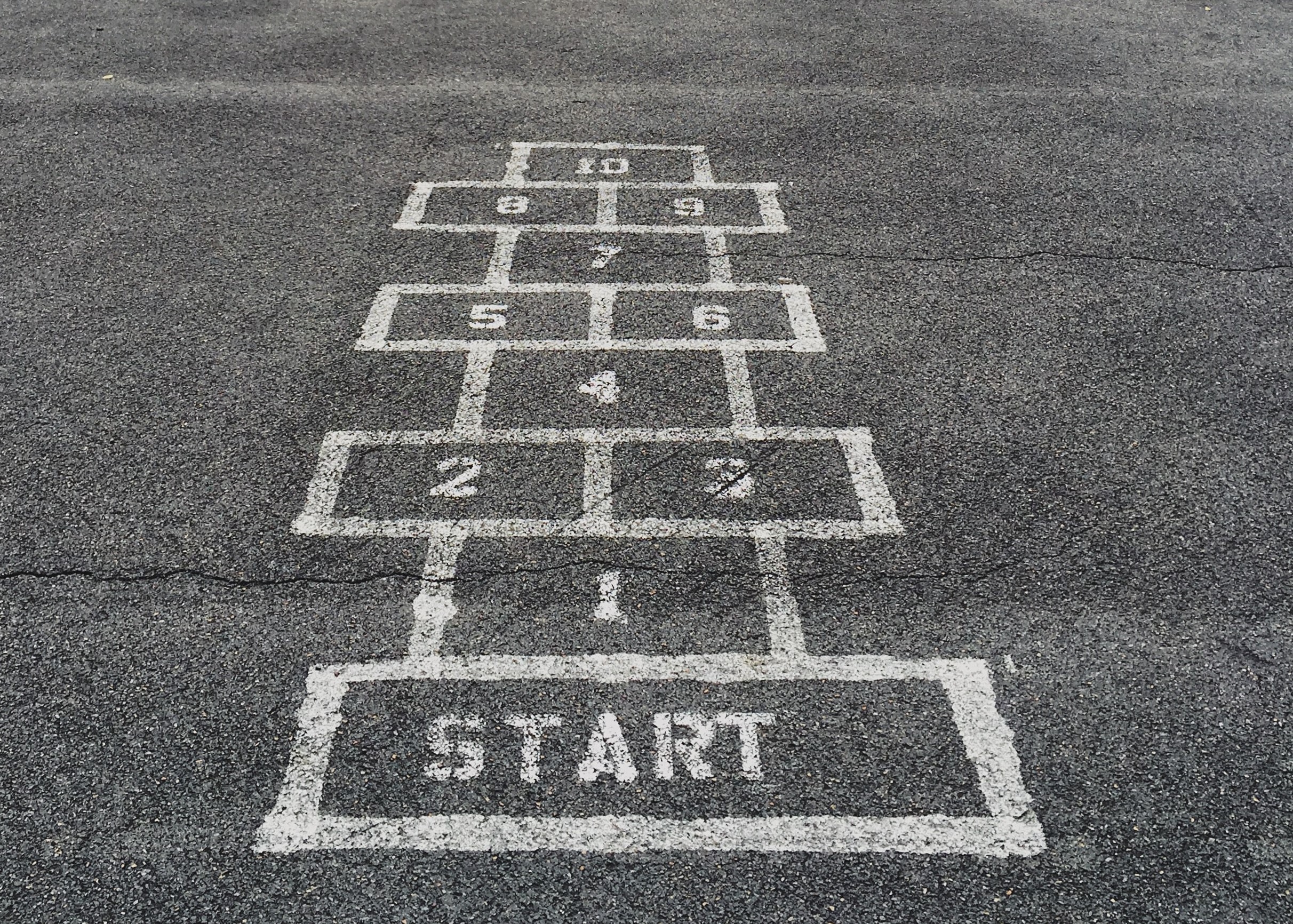Goals
We all have dreams and ambitions in life – and many of us make a special effort to accomplish them at the start of the year, more so than any other time. As you read in the latest news article, this behaviour can be explained by the “Fresh Start effect”. However, your initial motivation may fade after only a few weeks, as soon as the first obstacles appear. For some people, it’s lack of time; for others, their sports kit isn’t to hand, and still others may think: “Chocolate is too good to give up!” There are many reasons why we always give up our New Year’s resolutions, and they can also vary from person to person. And yet they are so often based on the same mistakes, such as lack of knowledge about how to set goals effectively.
“If a man knows not to which port he sails, no wind is favourable.”
- Seneca -
Growth through goals
If you pursue the same activities every day, then after a certain point, you will stop improving and rather, start to stagnate. Life will begin to seem tame or even meaningless. By contrast, goals will give life a new impetus and lead to growth. If you set yourself a new goal, you must also change your behaviour to achieve it, and the nature of this change is that you leave your familiar environment or your comfort zone. The comfort zone ends precisely where the situation becomes unfamiliar to you. At the beginning, you will probably feel uncomfortable and unsure – this is normal and you shouldn’t let it scare you off. Quite the opposite! Take advantage of the opportunity to set yourself a new challenge. If you succeed, your comfort zone will expand and you will experience personal growth.
Long-term goals and behaviour goals
What do we desire when we set ourselves a new goal? What do we really want to achieve? Essentially, setting a goal always means striving for a change.
Goals can be subdivided into short-term goals in the near future, and long-term goals, which we need rather more time to achieve. In the best-case scenario, short- and long-term goals are in harmony with each other.
As already stated, long-term goals relate to things or behaviours to be achieved over the long term. These goals usually reflect desires that are emotionally relevant to us.
For example, you wish to prove to yourself that you can meet demanding challenges. Or you want to accompany your friends the next time they go on a long hike. These wishes are the foundations of long-term goals:
- this year I want to complete a half-marathon
- in the summer I want to do a 6-hour hike with my family or friends
These goals are specific, but in the distant future, because they cannot be achieved overnight. Consequently it will be hard to experience success if only these goals are defined. Behaviour goals are much more promising in this regard. With these goals, you specify which behaviour you must change in the short to medium term, in order to achieve your long-term goal. Initially, you should strive exclusively for these goals, as they are easier to influence, meaning you will experience success more quickly. This does not just increase your motivation, but will lead you to your long-term goal, with a little patience and a lot of discipline.
Setting your goals efficiently: S.M.A.R.T.
Behaviour goals call for behaviour changes. So that your new goals actually result in the desired behaviour changes, it is essential to set them in the right way. Use the S.M.A.R.T. method to orient yourself here. SMART stands for: Specific, Measurable, Achievable, Realistic, Time-bound. If you set a goal, it should meet these five criteria. If your goal-setting is too vague, you take the risk of never getting started. Goals should be designed as precisely as possible. In relation to the above long-term goals, a behaviour goal could be: “I want to work out more.”
Let’s take this imprecise goal and apply the SMART method.
- Specific: “Work out more” is very general. Are you training for strength or endurance? What sort of activity? You need to set your behaviour goal more specifically so that you can put it into practice. A more specific goal would be: “I would like to go jogging regularly.”
- Measurable: Now we know that the target behaviour is “jogging”. But “regularly” still gives you plenty of leeway – it could mean anything between once per day and once per month. So the goal is still too imprecise. This is better: “I want to go jogging 1x per week.” This way we can check or measure if we really did go for a jog 1x per week.
- Achievable: You set and achieve goals only for yourself. This raises the question of whether you think that the goal you have set is worthwhile. Do you enjoy it, and is it meaningful to you emotionally? Here it may be sensible to remember your long-term goal as well as your behaviour goal. In our example, jogging might be achievable for several reasons. It trains endurance and keeps you slim, so you feel better in your own skin as a result. Also, when you jog, you spend more time in the open air, outdoors, and the fresh air gives you new energy.
- Realistic: Your goal should be enjoyable, measurable and always achievable. Now it is time to be realistic and scrutinise your goal. Is your goal viable and realistic? Will you find the time necessary for achieving your goal? Can you prioritise it enough? If this is only possible with extreme effort, you will probably only maintain the desired behaviour for a short time before discarding it again. So be honest with yourself. In actual fact, unrealistic goals only cause frustration and stress.
For our example, I would state: “Yes, 1x per week is realistic.” If I can’t go jogging during the week, I can certainly find 30 – 60 minutes at the weekend. - Time-bound: To ensure you start to change your behaviour, it is helpful to give yourself a timeframe. With the definition “1x per week” we already have a time-bound, measurable framework. Maybe we would like to improve over the year and go jogging more often than 1x per week. Then the original goal could be: “I want to go jogging 1x per week until the end of April”, which is changed at a later time to: “I want to go jogging 2x per week”.
Now let’s compare the two behaviour goals: “I want to work out more” versus “I want to go jogging 1x per week until the end of April”. I believe I can state that it is clear at first glance that the second goal is much more precisely defined and therefore more of an encouragement to act. The goal could be still more specifically formulated, for example: “I want to go jogging 1x per week for 30 minutes until the end of April” or “I would like to jog 5 km 1x per week until the end of April”. The exact wording is up to you, but it’s worth making sure that you apply the five SMART criteria.
Helpful W-questions
To work towards your behaviour goal successfully, it is helpful to plan the behaviour in detail. The SMART method is one option for doing this. Other questions that you could also ask yourself are:
- When can I best put this behaviour into practice?
- Where should I do it? Give the behaviour a specific context, such as: “Jogging in the woods”.
- How often should you practise this behaviour? How intensive should your workout be?
- Who will you do it with?
The more precise your planning, the easier the behaviour change will be. In addition, you can also make use of “if-then plans”.
If-then plans
Now you have defined your goals, “all” you have to do is achieve them. “If-then plans” are a useful tool that could help you here. These plans have a basic, two-part structure. First the “if-part” must be identified. This means a specific situation that will trigger a certain behaviour in future. The second, “then-part” subsequently describes the desired behaviour. In essence, you make a preliminary decision when you make an “if-then plan” and this trains your attention. Planning the “if-part” has the effect of mentally activating the described situation, which consequently makes it more accessible. If this situation arises, the pre-activation causes an imaginary reminder bell to ring in your head and we realise that we are in the situation for keeping to the goal. As a result, the desired behaviour will be easier than reverting to old habits. What’s more, the new behaviour leading to the desired goal receives mental training with your “if-then plans”. If you are repeatedly successful with the target behaviour in the if-situation, it becomes easier every time until the desired behaviour is automatic.
An example: Let’s take the long-term goal: “I don’t want to stare at a screen in the evenings” because when I do, I take ages to go to sleep. The behaviour goal arising from this is “I want to read more”. Using the SMART method, the goal now looks like this: “During the working week (Mon – Fri), I want to read a non-fiction book for 30 minutes each evening.” To achieve this goal, the following “if-then plan” could be helpful: “When, during the working week, I sit down on the sofa after dinner, I will pick up a book instead of the TV remote.” In addition, you can ask yourself more W-questions, such as: “Where else can I read?”, “How long would I like to read for?” or “What would I like to read?”
Tip: make new habits from your existing routine
When you are setting and achieving goals, you are essentially creating new routines. When you do this, it will initially requires a lot of effort. This is normal. To make it easier to jump-start new habits, you can take advantage of an existing routine – the advantage of existing habits is that they are regular, effortless and automatic. That is why the new behaviour should be combined with existing habits. Your established routines will become the situations of the above “if-parts”. If you always drink coffee in the morning and would like to drink more water, you could, for example, undertake to do the following: “When I drink my coffee, I’ll have a glass of water with it.” Or if you want to spend less time on your smartphone in the evening, you could tell yourself: “When I have finished cleaning up in the kitchen after dinner, I’ll put my phone on flight mode and leave it in the kitchen.”
Enjoy changing your behaviour and good luck!
 subscribe to newsletter
subscribe to newsletter

